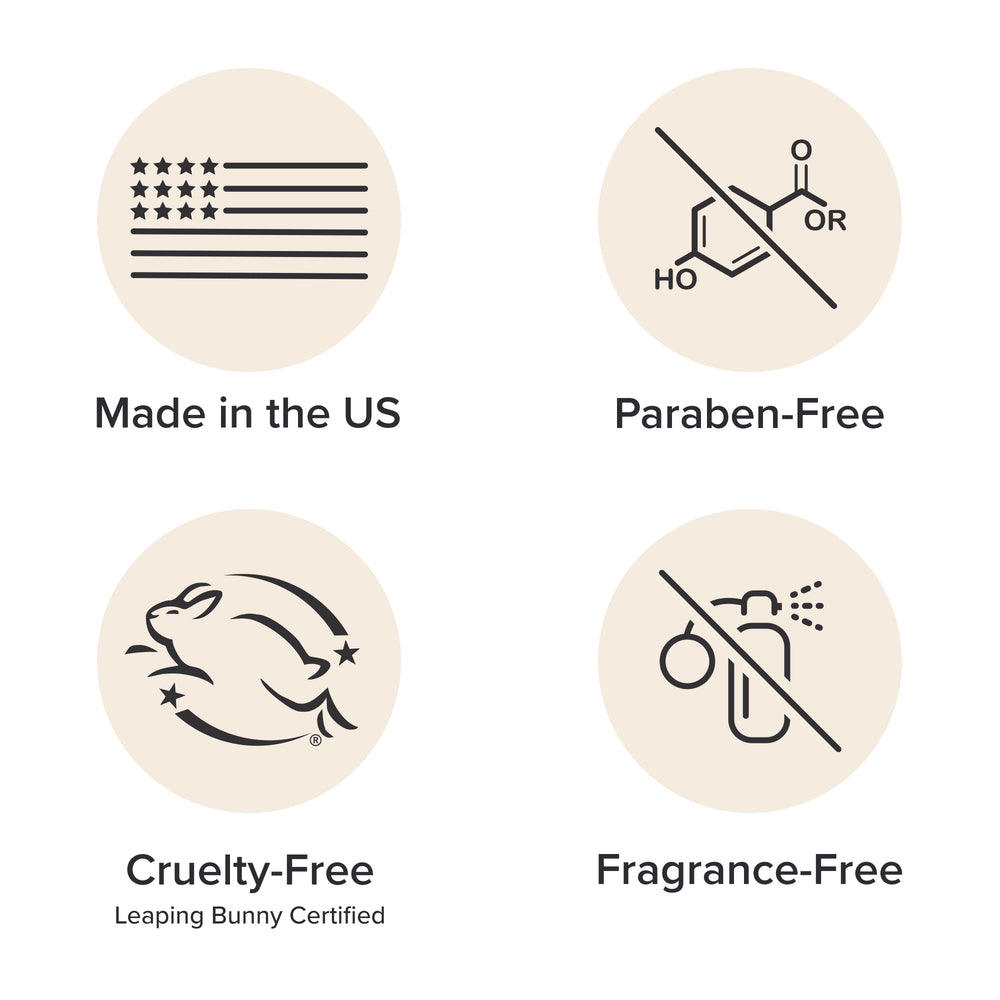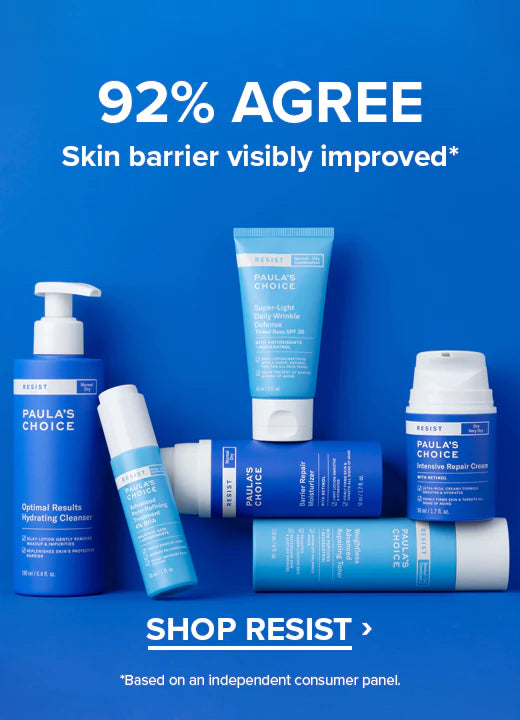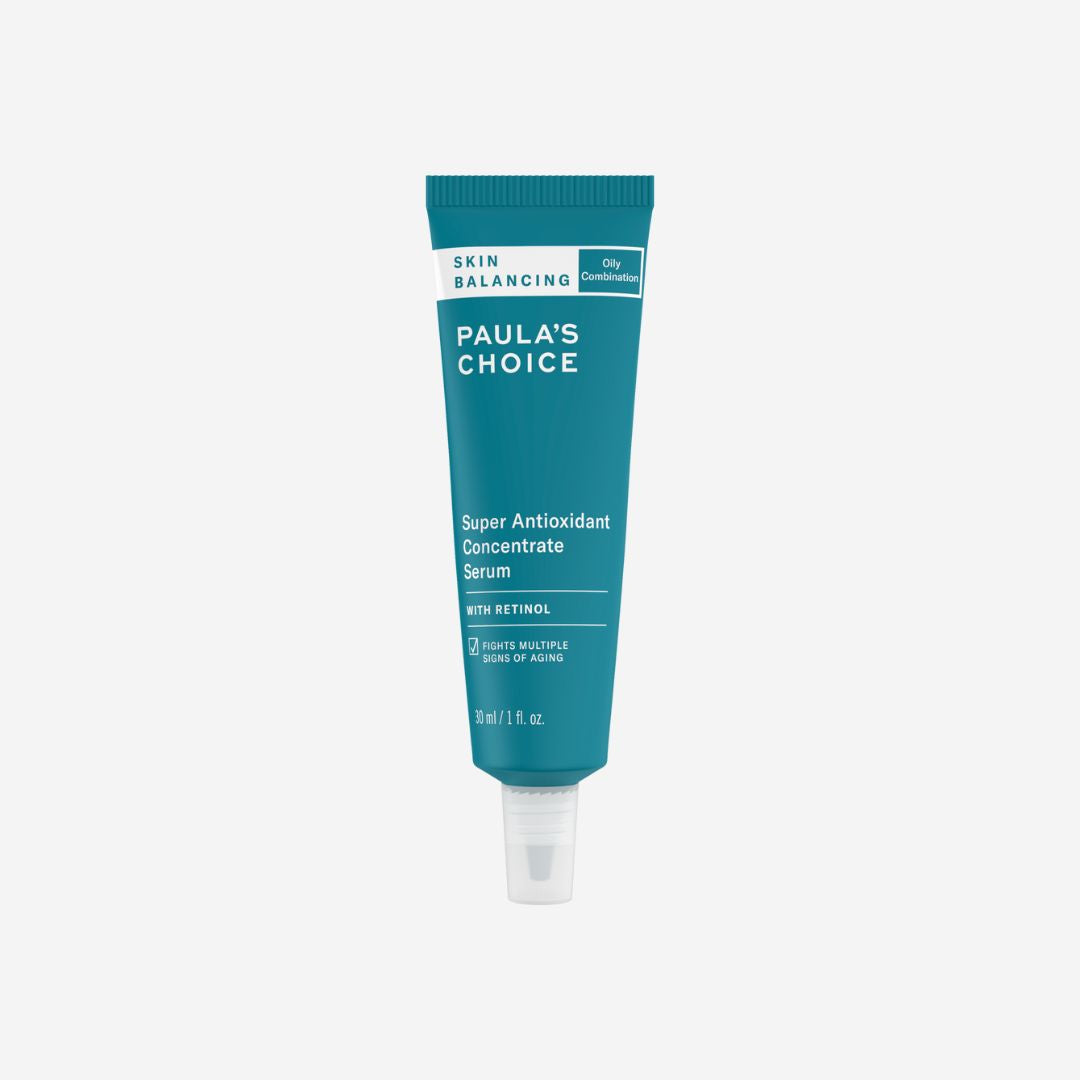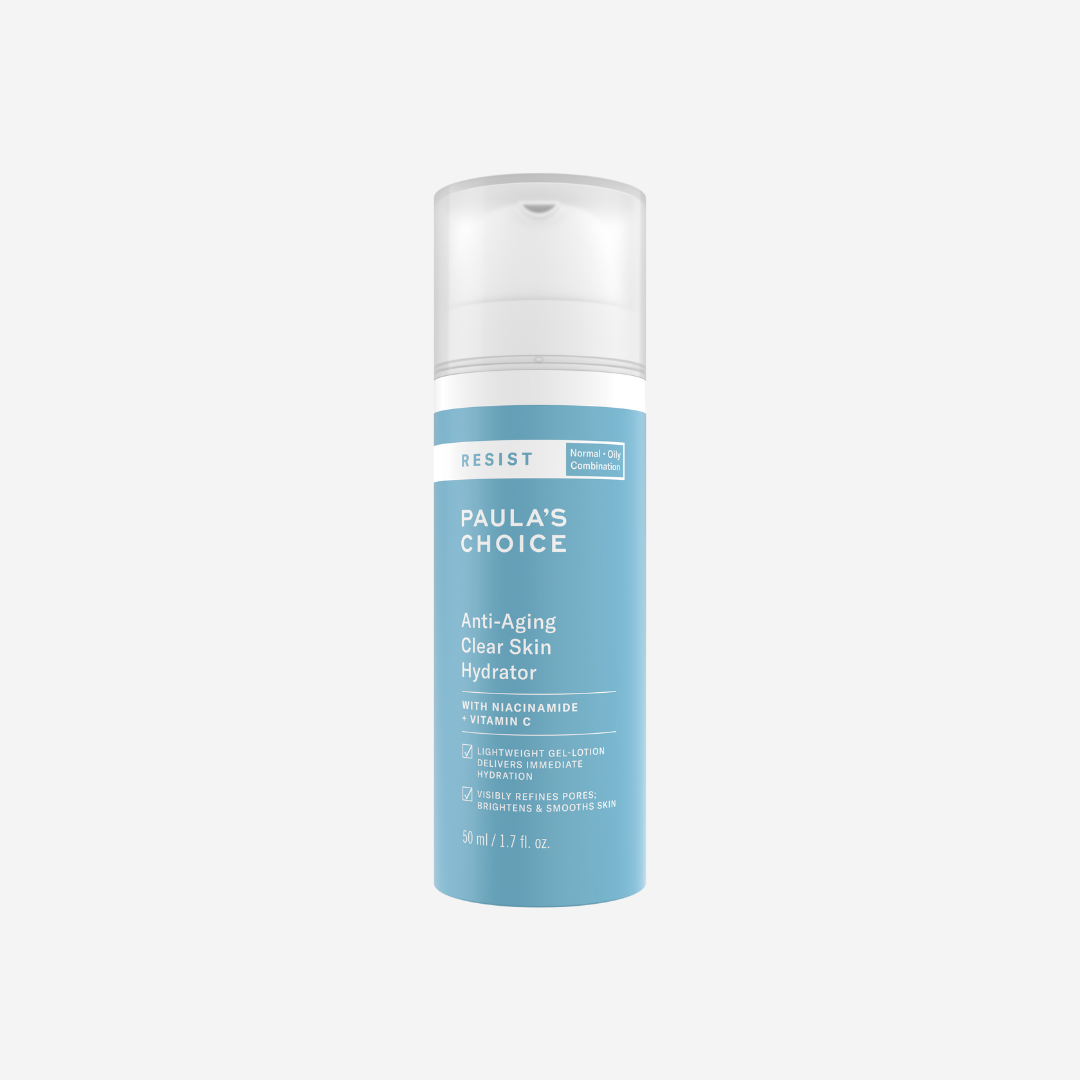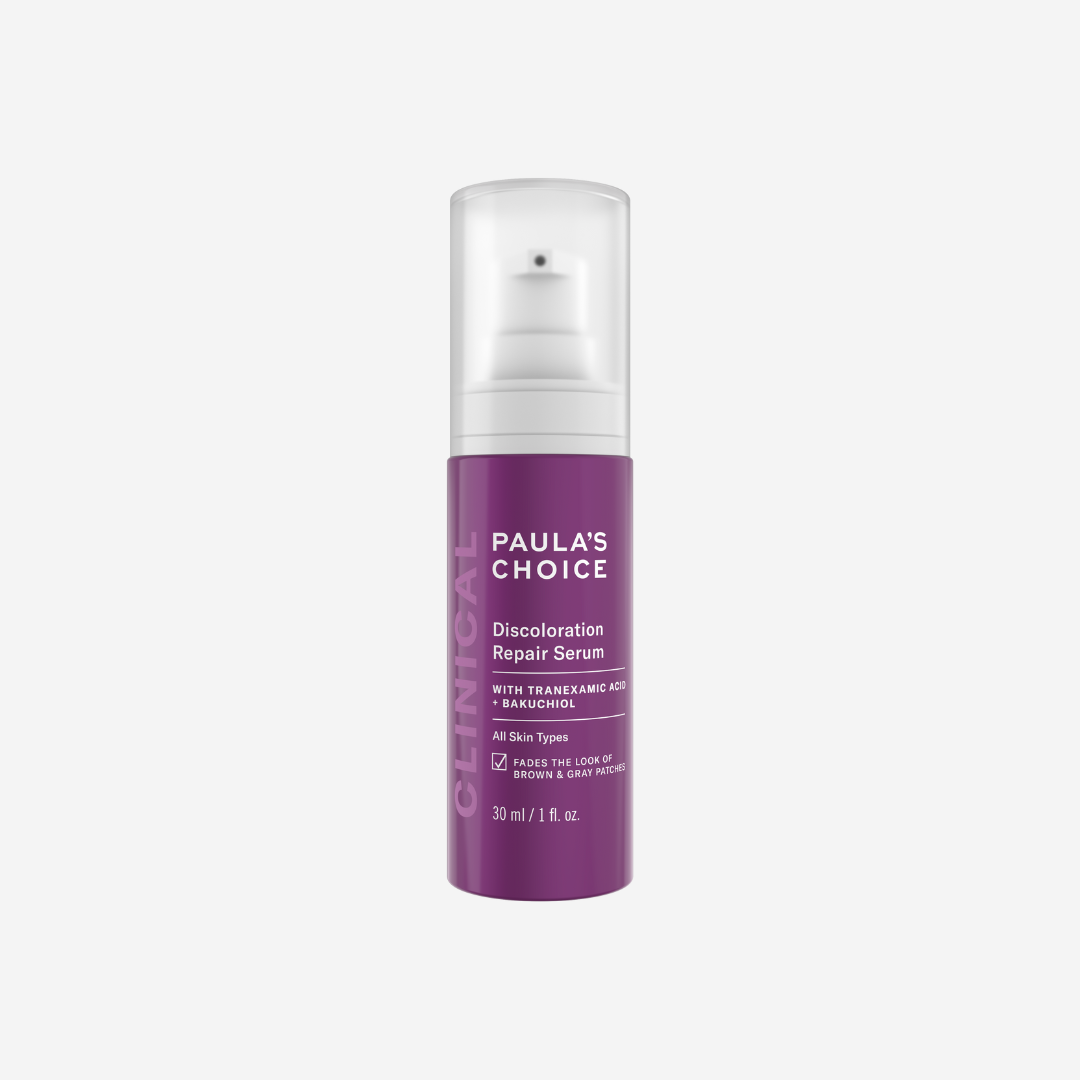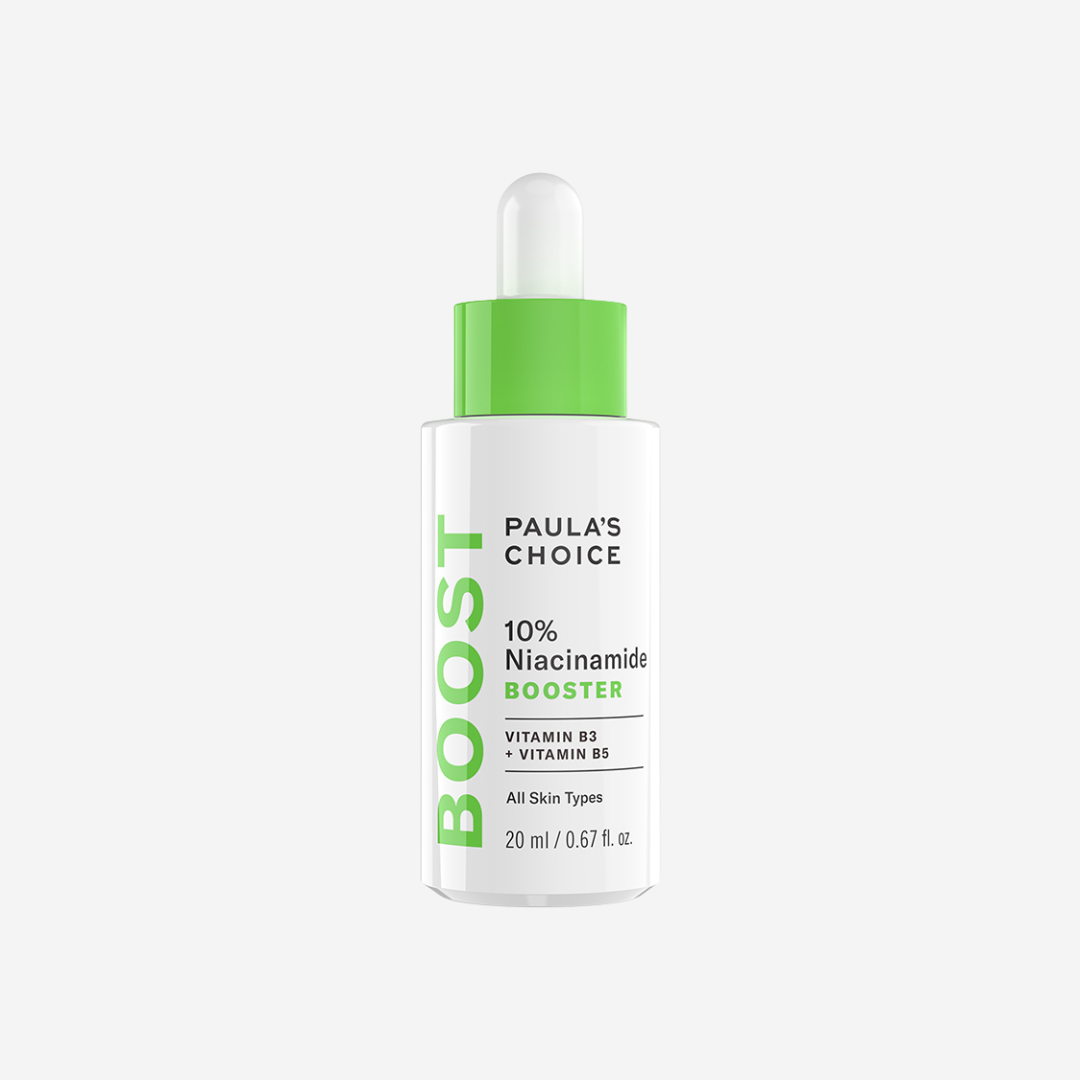Written by: Mercedes Santaella-Lam
Medically Reviewed by: Debra Jaliman MD Board-Certified Dermatologist
It’s time for some myth busting, this time about confusing claims surrounding two of our favorite skin care ingredients: niacinamide and vitamin C. Several blogs, and even some beauty magazine articles, state that while the two ingredients are great on their own, combining them creates a two-fold problem: One, it neutralizes the effectiveness of both ingredients, and two, it might create a substance (nicotinic acid, also known as niacin) that reddens skin.
Sigh of relief: Research has shown that combining niacinamide and vitamin C does not lead to skin problems; in fact, the combination can lead to a wealth of skin benefits (1).

The truth about niacinamide and vitamin C
What’s propelling the idea that niacinamide and vitamin C can’t be combined is old research that was interpreted incorrectly. At Paula’s Choice Skincare, all our products and advice are research-based. We examine all research with a critical eye to see how it applies to the information we share and the ingredients we use in our skin care products. Here’s where we’re going to get science-y, but hang in there, your skin will love the results!
The studies showing incompatibility between niacinamide and vitamin C date back to the early 1960s (yes, that far). These studies were off from the start because they used non-stabilized forms of both ingredients, whereas both ingredients are typically stabilized when used in modern-day cosmetics formulas.
Niacinamide is a pretty “tough” ingredient; light and air don’t have the same effect on it as they do on antioxidants like vitamin C. What’s important for niacinamide is that the product is formulated at a pH that’s close to neutral. Vitamin C (pure ascorbic acid), on the other hand, does best in a low pH (acidic) environment. However, nicotinic acid—the undesirable by-product of niacinamide and vitamin C—becomes an issue only when niacinamide and vitamin C are combined in a high-temperature environment for a long time. That temperature is higher than you’d find in most at-home scenarios, including leaving a box of skin care products sitting outside in the sun for a couple of days.
Also, it’s important to point out that this concern applies only to pure vitamin C, not to its many other forms (such as magnesium ascorbyl phosphate, tetrahexyldecyl ascorbate and ascorbyl glucoside).
To reiterate, combining pure vitamin C (ascorbic or l-ascorbic acid) with niacinamide is fine as the circumstances that produce nicotinic acid do not apply to everyday applications of these powerhouse ingredients.
Niacinamide
Niacinamide, AKA vitamin B3 and nicotinamide, is one of the giants of the skin care industry. A truly multitasking ingredient, it plays an integral part in the maintenance of healthy skin through the coenzymes it's broken down into and its antioxidant properties (2).
Beyond the topical application of niacinamide, it’s often taken as a supplement. That’s because although the body requires this water-soluble vitamin, it can’t make it on its own.
In skin care, niacinamide’s recognized for its ability to help normalize pores’ lining, reduce the appearance of stretched pores and decrease the look of dark spots. However, this isn’t where niacinamide’s benefits stop.
Benefits of niacinamide
- Minimizes the appearance of large, ‘stretched’ pores(3)
- Tackles rough, uneven skin texture(4)
- Reduces the appearance of fine lines and wrinkles(5)
- Works to decrease the look of an uneven skin tone and dark spots(6)
- Assists in protecting skin from pro-aging environmental aggressors(7)
- Helps reduce trans epidermal water loss (TEWL)for more hydrated skin (8)
Vitamin C’s long been skin care’s go-to anti-aging antioxidant. This penchant for turning towards vitamin C in skin care formulas makes sense, as normal, healthy skin contains an abundance of the vitamin. This research-backed ingredient mitigates the damage associated with pro-aging environmental actors, like UV rays and pollution, to help skin maintain a young, even tone and look.
Its impressive environmental protection properties mean it works well with other antioxidants, particularly vitamin E and when applied under broad-spectrum sunscreen. However, vitamin C is a delicate ingredient that’s prone to degradation when exposed to air and light. So, when looking for a vitamin C product, seek products with airtight and light-protective packaging. (Remember: this research-backed skin care ingredient’s also referred to as ascorbic or l-ascorbic acid. So, when reading an ingredient list, be on the lookout for any of its names!)
Although well known for its antioxidant properties, it can also benefit skin in several other ways.
Benefits of vitamin C
- Demonstrated to reduce the appearance of fine lines and wrinkles(9)
- Potent antioxidant that lessens the impact of damage incurred by UV rays(10)
- Helps support skin’s collagen content, resulting in a firmer, younger look and a more stable skin architecture (11)
- Adept at fading the look of dark spots, brightening an uneven complexion(12)
- Enhances skin barrier properties(13)
Research shows that you’re safe to mix both niacinamide and vitamin C, either together in the same product or combined from different products that you layer one over the other. This combination of skin-beneficial ingredients is unlikely to cause irritation, but likely to make skin look and act healthier since these ingredients offer distinct and synergistic benefits.
Benefits of niacinamide and vitamin C together
The benefits from using niacinamide and vitamin C together are numerous: On its own, niacinamide is a skin-restoring ingredient that can visibly improve the appearance of enlarged pores, fine lines, and dull skin. Vitamin C is a potent antioxidant that helps defend skin from the visible impact of environmental stressors such as free radicals plus, it's a dullness-diminishing agent that can improve the visible signs of aging.
Together, these ingredients form a powerhouse combo that addresses uneven skin tone, wrinkles, loss of firmness, and dullness. Whether you have dry, oily/combination or sensitive skin, you will see a complexion that progressively becomes more radiant, smoother, more even, and noticeably younger-looking.
How to layer niacinamide and vitamin C
Before you begin layering, you need to find the right vitamin C and niacinamide products to add to your skin care routine. These two vitamins appear in several skin care product types, including cleansers, treatments and moisturizers. However, to get the most out of them, a leave-on product, like a toner, treatment (serum or booster) or moisturizer, is the best vehicle for both vitamin C and niacinamide. The more time these two are allowed to stay on skin, the better!
As for texture, this is entirely up to your skin type and skin concerns. As a rule of thumb, lightweight and gel textures for niacinamide and vitamin C serums and boosters work well for all skin types. However, when it comes to moisturizers, oily and combination skin might do better with lighter creams and gels, whereas dryer skin types tend to need the extra cushioning and hydration a thicker cream provides.
What goes first vitamin C or niacinamide?
The way in which you layer vitamin C and niacinamide depends upon the texture of the products you choose. For example, if you choose to use a fluid niacinamide booster and a vitamin C moisturizer, apply the booster first and the moisturizer second. You should always apply skin care products in order of thinnest to thickest consistency.
How long should you wait between vitamin C and niacinamide?
There are a lot of ideas circulating about how long to wait between applying different skin care products. The truth is, you don’t need to wait for a product to “dry down” before applying the next. This holds true for vitamin C and niacinamide.
Applying one after the other doesn’t impact permeability or effectiveness. As we’ve established, these two ingredients don’t cancel one another out! Besides, given that vitamin C is the primary antioxidant in skin, waiting between applications of these ingredients just doesn’t make sense.
If you experience flushing from niacinamide or vitamin C, you can wait before applying your next skin care product. Or better yet, consider different products with these ingredients!
Can I use niacinamide with vitamin C in the morning?
You can use niacinamide with vitamin C in the morning and/or at night. This is entirely up to you and your application preferences.
Many choose to use both in the morning, as applying both before you face the day provides your broad-spectrum SPF 30+ with ample backup protection from environmental aggressors. Generally, vitamin C is the better go-to for daytime use, although there’s nothing wrong with using niacinamide in the morning, too.
One more point: We know, from reams of research, how niacinamide benefits skin. But as mentioned above, vitamin C (ascorbic acid) is the most abundant antioxidant that occurs naturally in skin. Given this fact, if vitamin C and niacinamide weren’t compatible, topical use of niacinamide would either do nothing or result in skin problems—today’s studies are showing only benefits.
We invite you to try this combination for yourself. You might find you’ll become a true believer—no myths, just facts and results.
Learn more about skin care myths.
References for this information:
https://www.paulaschoice.in/collections/vitamin-c?limit=26
- Molecules, February 2022, ePublication
- Journal of Cosmetic Dermatology, 2004, issue 2, pages 88–93
- Pharmaceutics, May 2020, ePublication
- Journal of Cosmetic Dermatology, November 2007, pages 243-249
- Recent Advances in Anti-Infective Drug Discovery, 2021, pages 196-208
- The Journal of Clinical and Aesthetic Dermatology, August 2021, pages 52-56
- Biomolecules & Therapeutics, November 2019, pages 562-569
- International Journal of Pharmaceutics, April 2020, ePublication
- Journal of Cosmetic Dermatology, December 2012, issue 4, pages 310–317
- Indian Dermatology Online Journal, April-June 2013, pages 143–146
- Clinical, Cosmetic, and Investigational Dermatology, September 2015, pages 463–470
- Journal of Drugs in Dermatology, January 2013, pages 45-50
- Nutrients, August 2017, ePublication
https://www.paulaschoice.in/collections/vitamin-c?limit=26
Related Products


